|
Saturn is a gaseous planet like Jupiter, and its mean density is less than that of water,
indeed only 0.7g/cm3.
Saturn is very famous by its beautiful ring.
The top panel is Saturn observed by CAC (Casegrain Adjustment Camera) of the Subaru Telescope.
This is a composite image of those observed with three filters of B band (blue),
V band (green), and R band (red).
On the surface of Saturn,
there exist striped patterns running parallel to the equator.
These are similar to those seen on Jupiter, but simple.
The diameter of the famous ring of Saturn is 2.26 times larger than Saturn itself.
The ring is made of ice grains of the order of cm or meter size,
and is divided into A to F rings.
The gap between the A and B rings, seen in the above image,
is called Cassini's Division.
上:すばる望遠鏡のCAC (カセグレン調整用カメラ)で撮影した土星.
Bバンド(青),Vバンド(緑),Rバンド(赤)の3フィルターで撮像した後,
カラー合成したもの.
木星と同様に赤道に平行な縞模様がありますが,構造はもっと単純です.
有名な輪を持ち,その直径は本体の2.26倍あります.
土星の環はcmないしmサイズの氷の粒でできており,
A環からF環まで分れています.
上の画像では,外側のA環とB環の間に,
発見者にちなんでカシニの空隙と呼ばれる隙間が見えています.
By courtesy of the Subaru Telescope / NAOJ
| 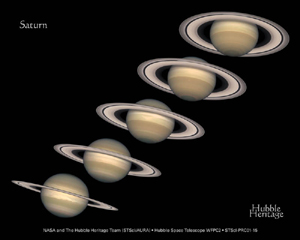
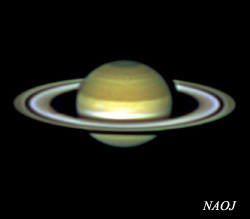
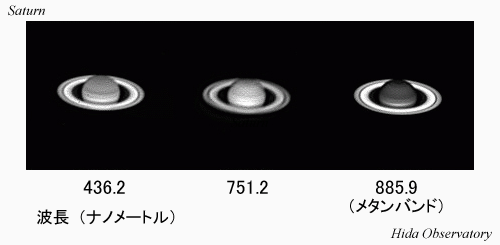
 Appearance of the Ring of Saturn(GIF animation)
Appearance of the Ring of Saturn(GIF animation)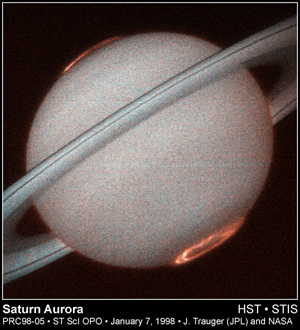
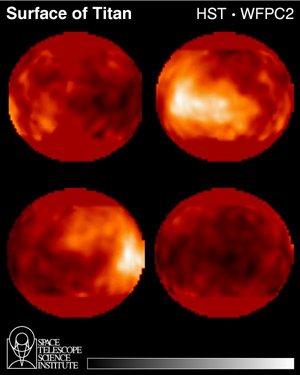
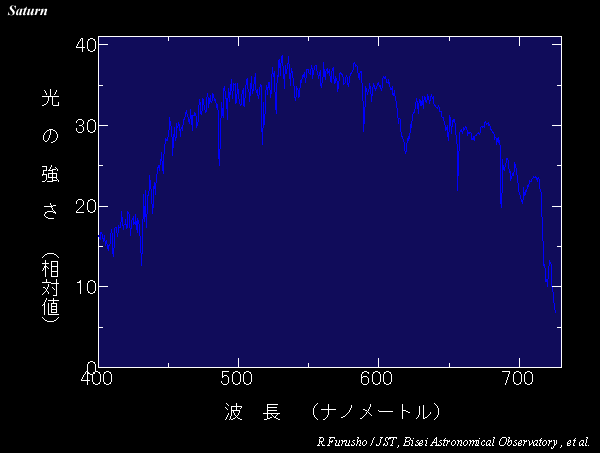
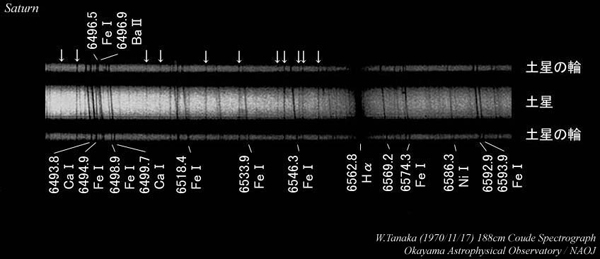
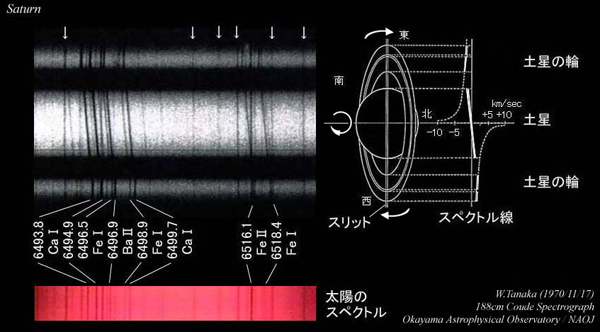
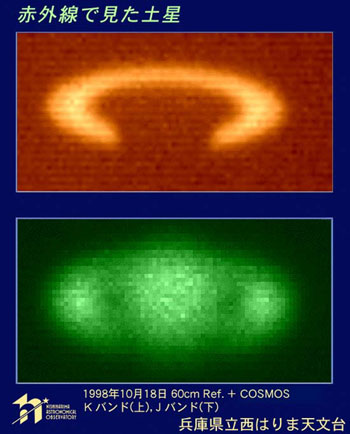
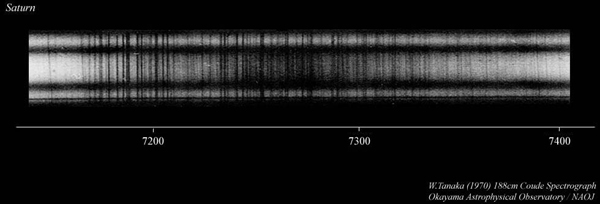
 Go to Submenu
Go to Submenu Go to Menu
Go to Menu